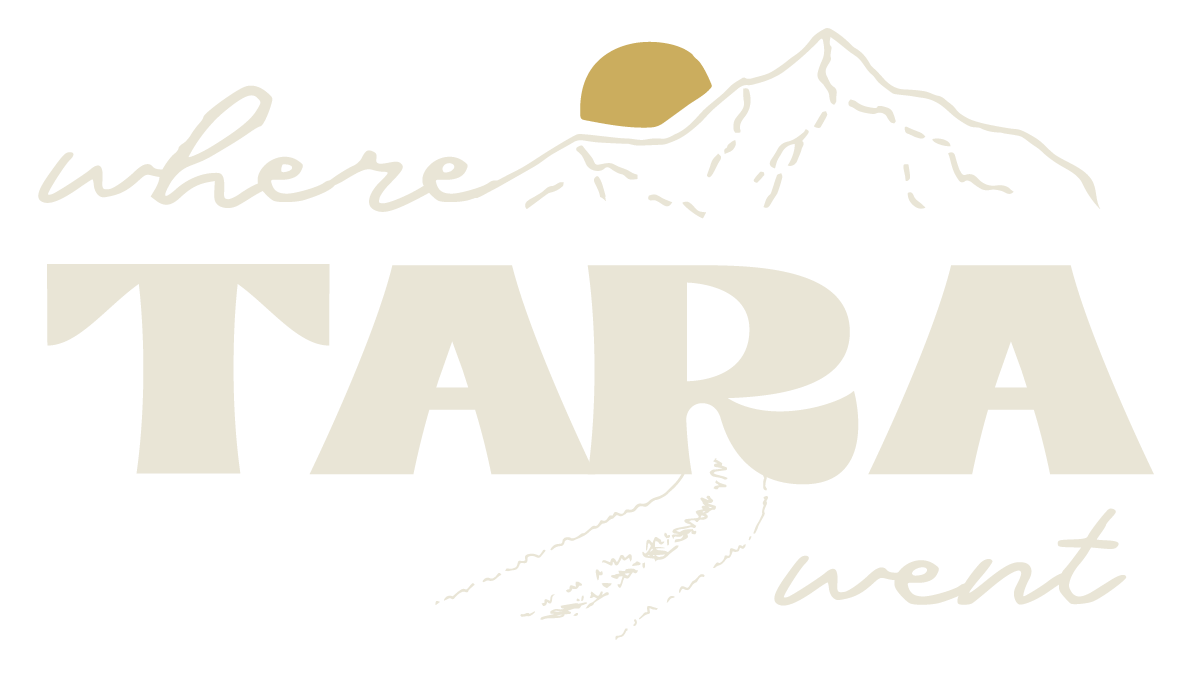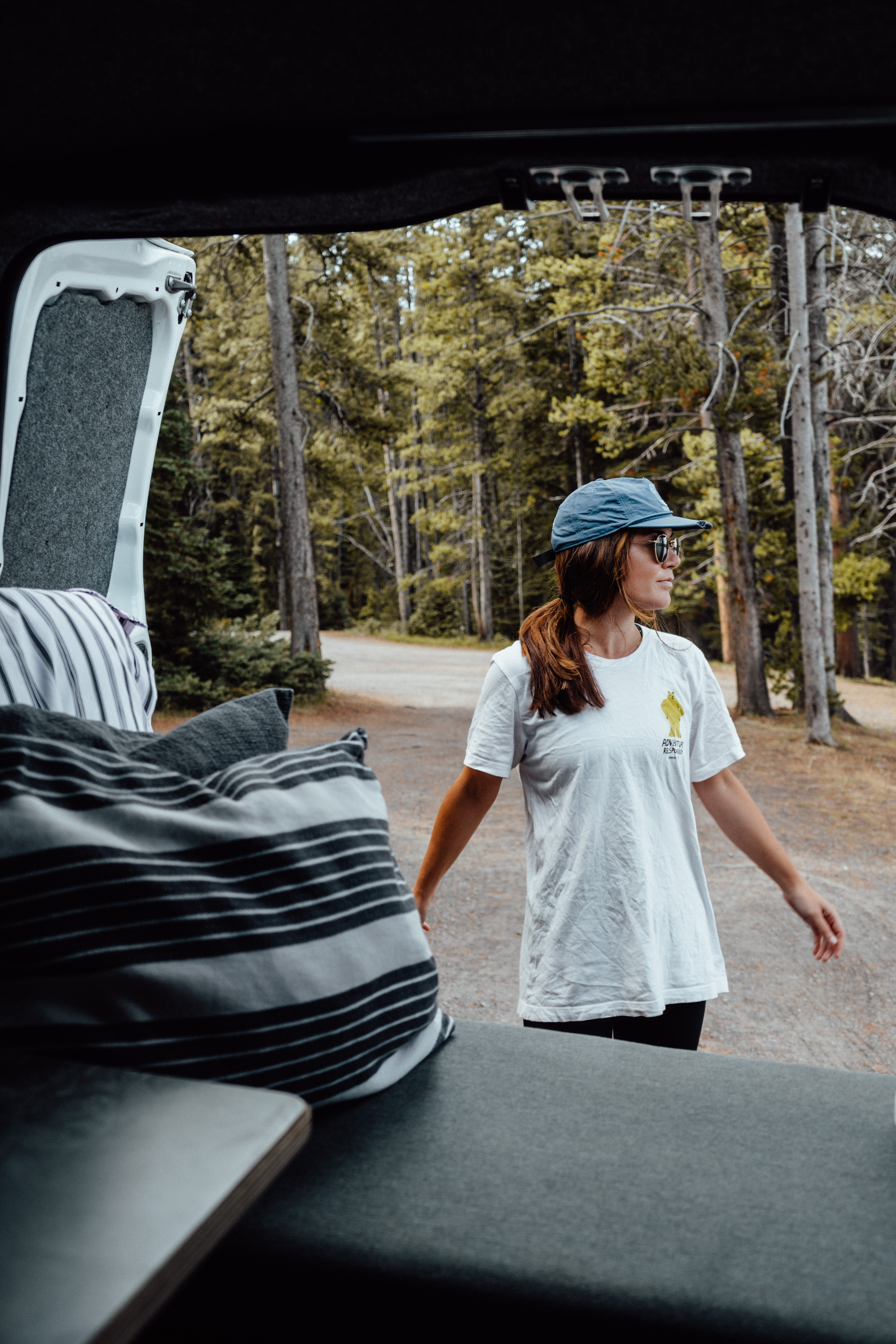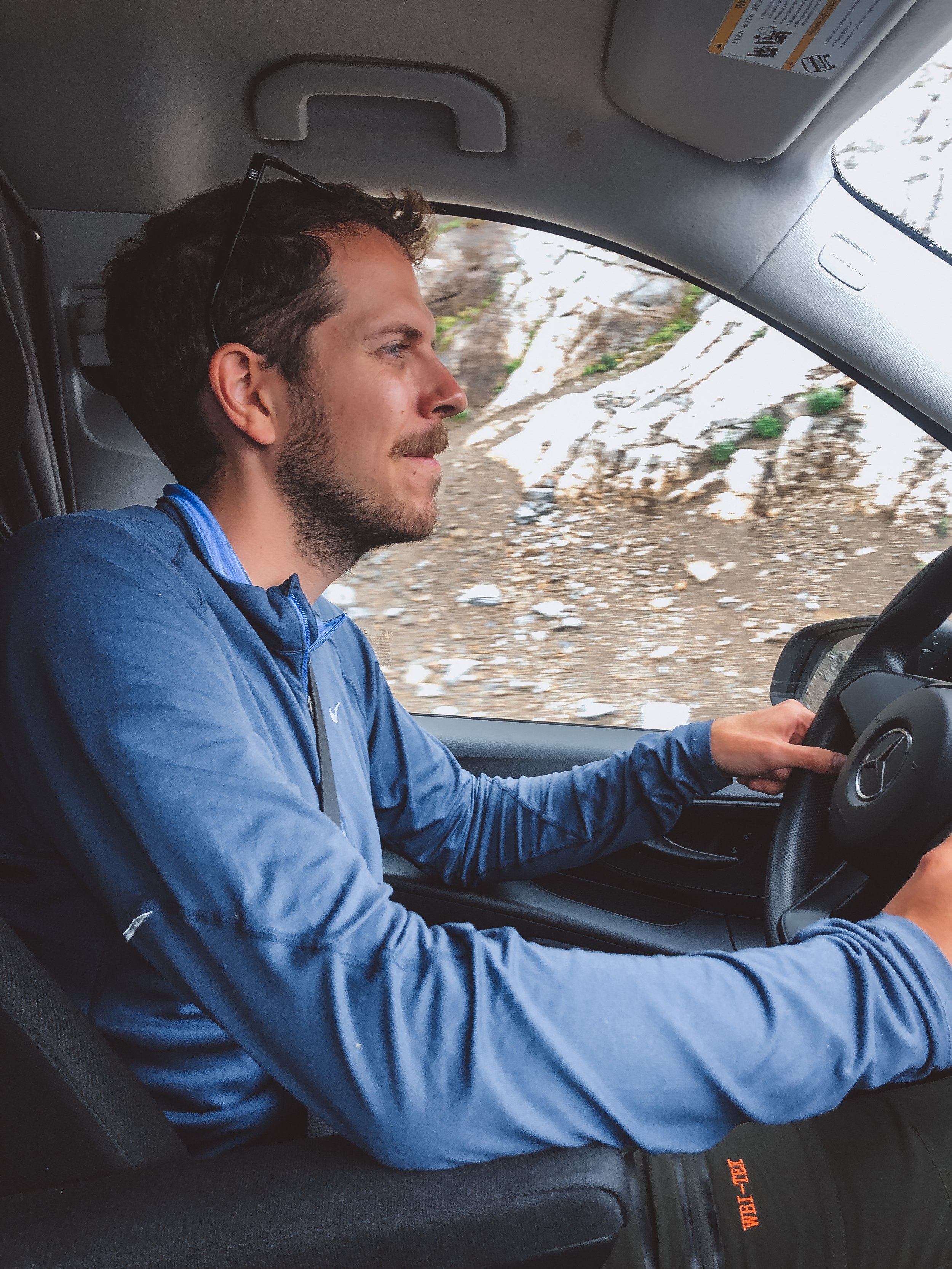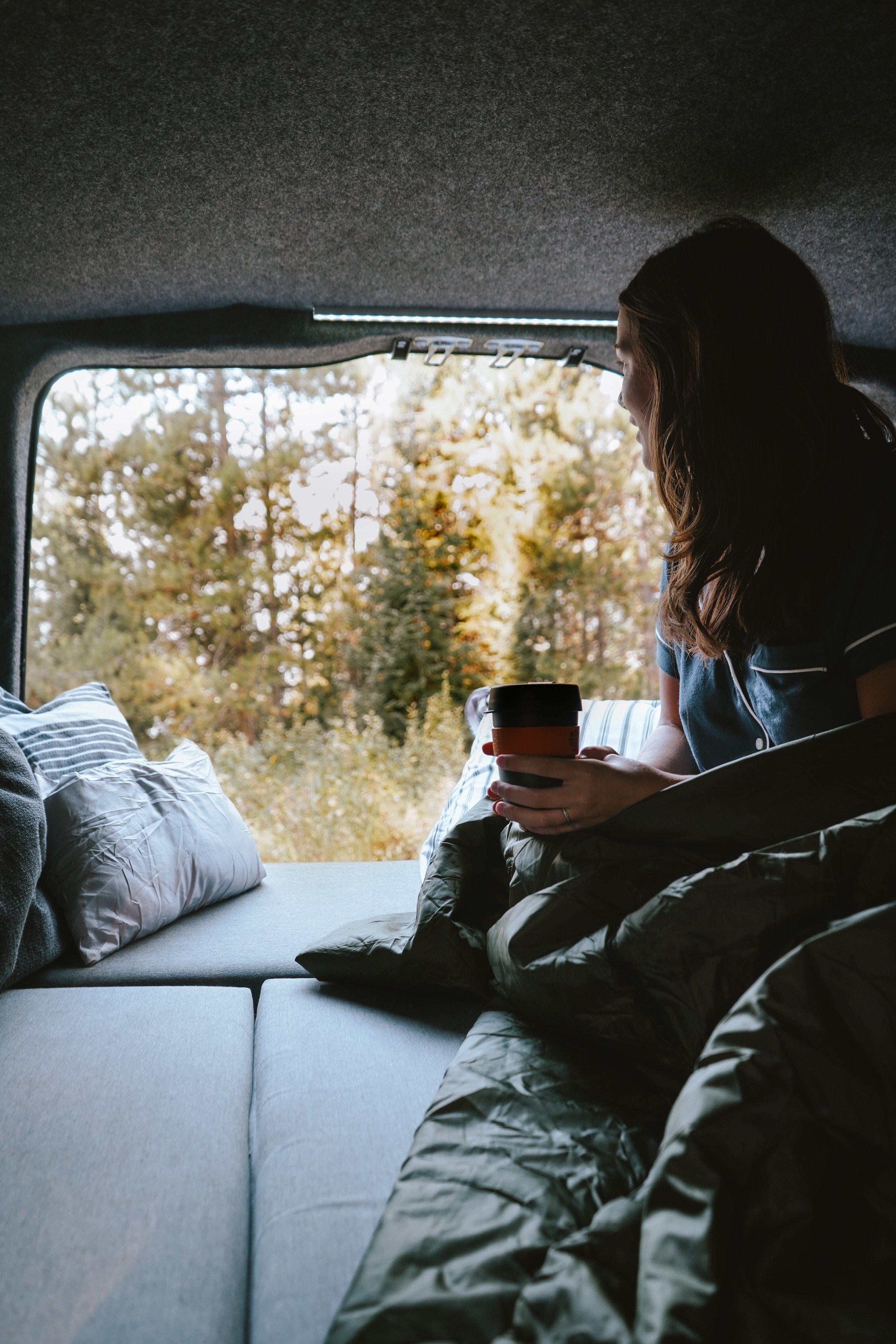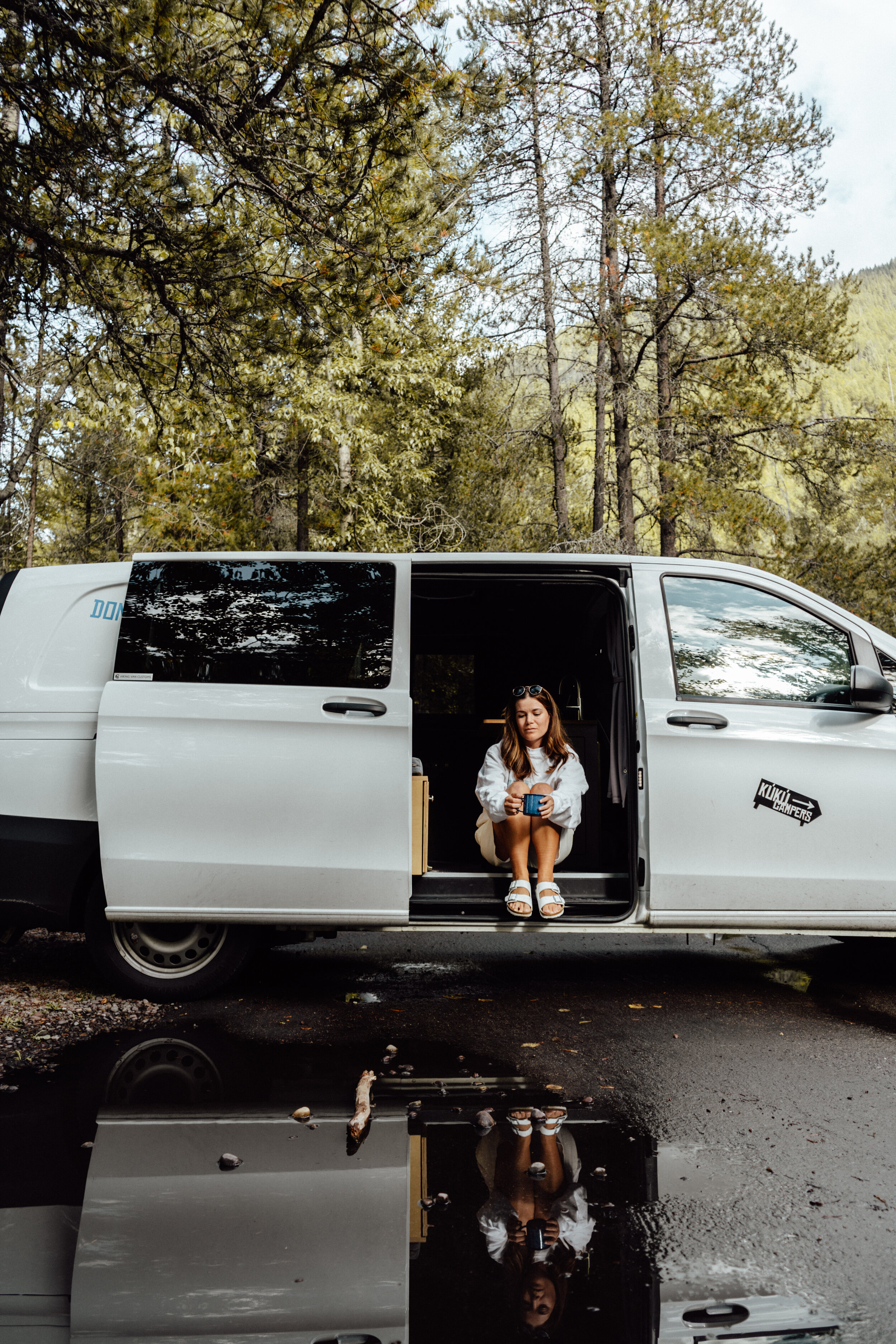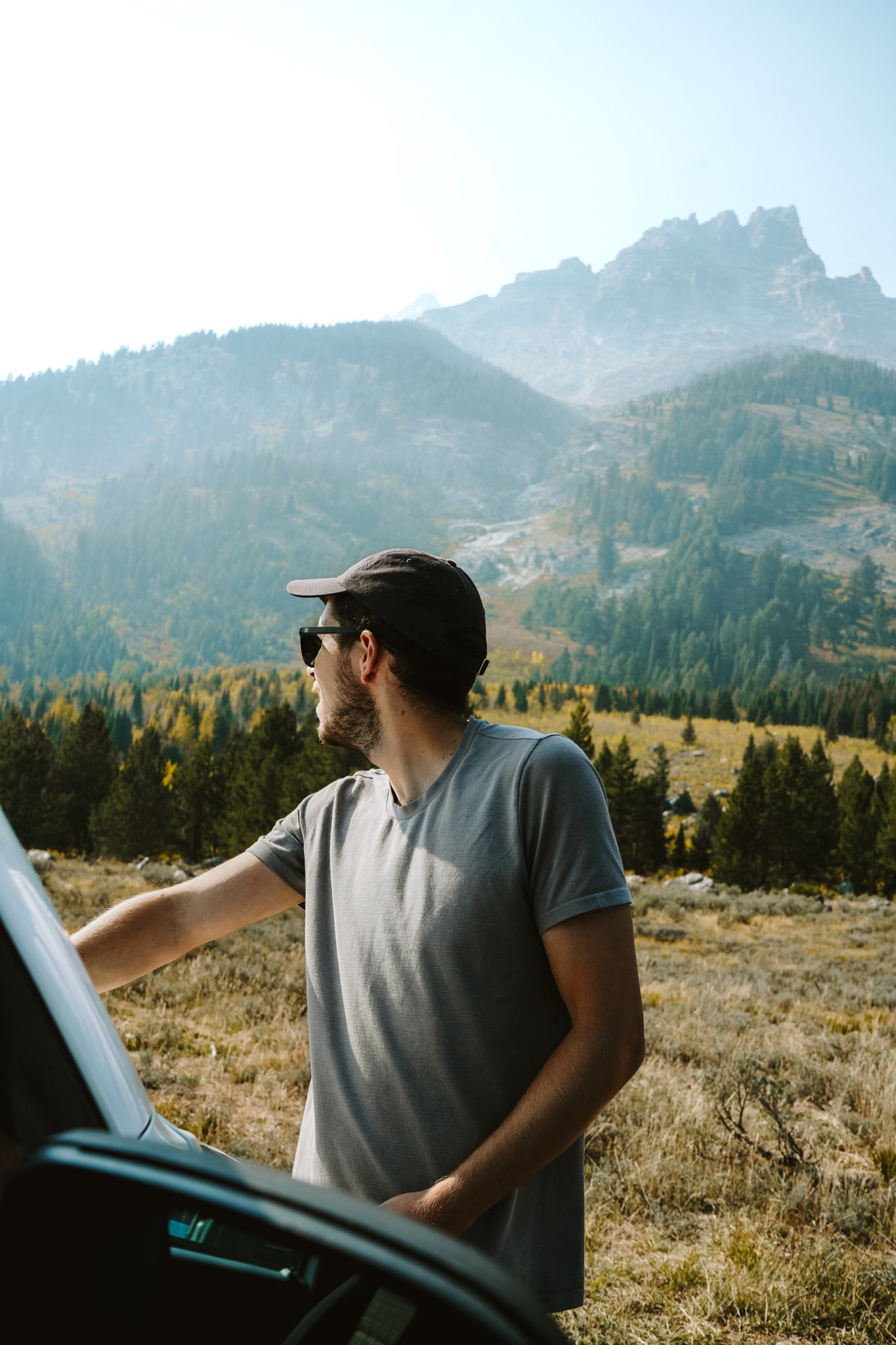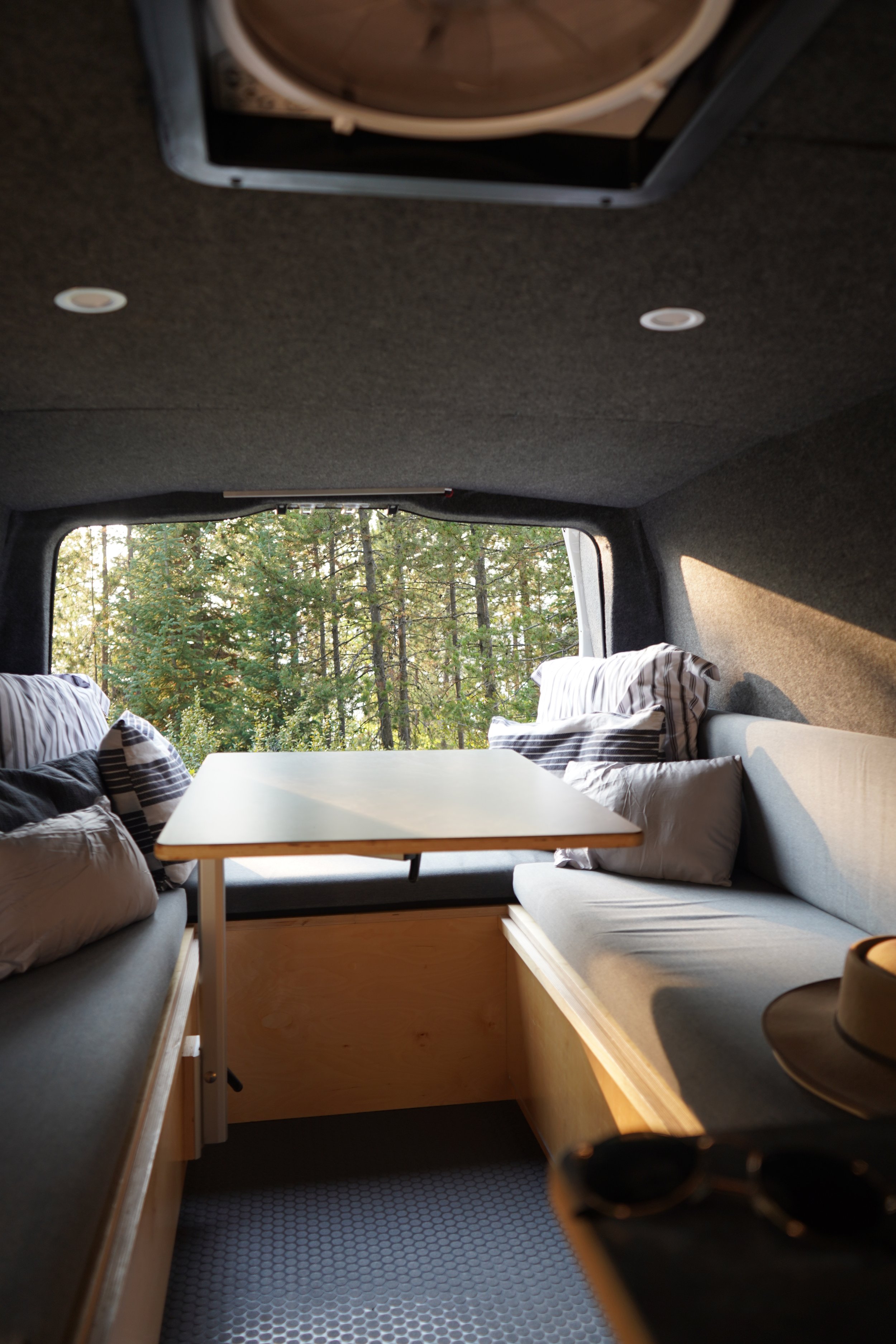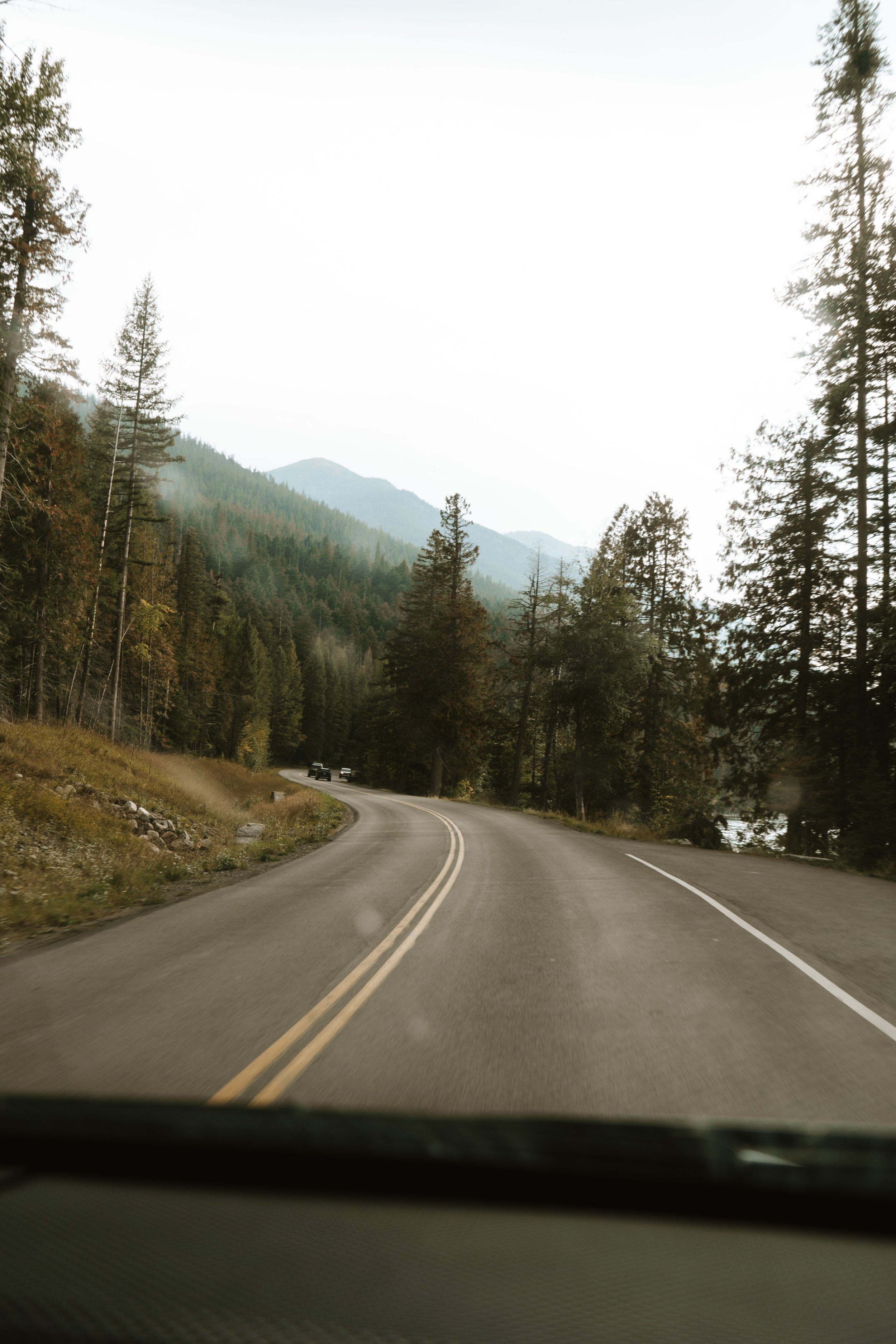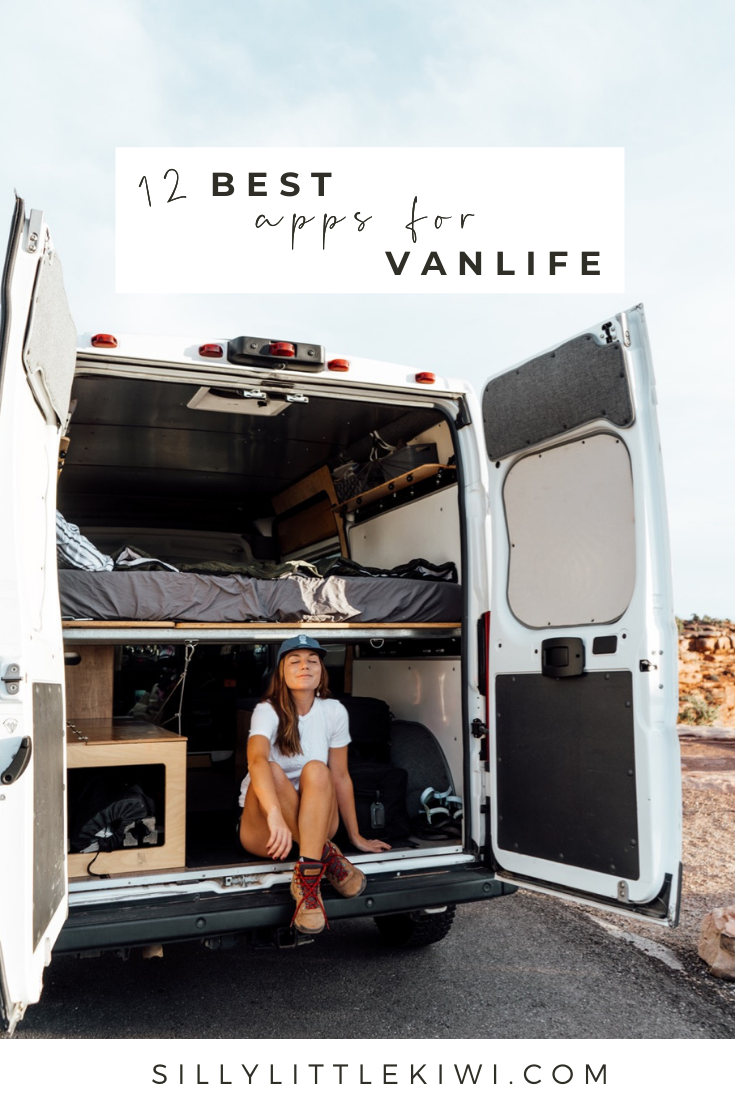the most useful apps + best resources for van life in the U.S.A
This post contains 12 of the most useful apps for van life and the ultimate resources for campervan travel in the U.S.
Hot take: I believe that van life is the best way to see the United States. Campervan travel in the U.S. gives you the freedom to tweak your itinerary as you please, start and end each day surrounded by the best scenery in the country, and cover a LOT of ground! You can also travel slowly, which is always my preferred way to explore.
Planning, packing, and preparing for a road trip across the United States is no small undertaking, since it’s not a small place. Throw in driving and dwelling inside a converted van, and you’ve got a long list. of logistics to work out. Do not be discouraged: the U.S. was made for campervan travel and freedom camping. It’s worth the work because van life is the ideal way to see the country. And, lucky for you, I have already done a huge chunk of the research and reconnaissance for you, culminating in this mega post with all my top tips, most useful resources, and custom maps to help you in your U.S.A #vanlife journey.
This post gets down into the nitty-gritty of campervan travel in the U.S., from packing lists to podcast recommendations. Whether you’re a newbie in a van or just a rookie road tripper, this post should clear up confusing questions you might have.
van life packing essentials ↴
Packing for van life is much the same as packing for camping. You’ll want to make sure you have the “ten essentials” and expand your packing list from there. Looking back on our four-month van trip, Luke and I agree that we packed nearly perfectly with a few tiny addendums. I’ve created these lists to try and help you know what to bring and what to go without.
ten essentials
Navigation | map, compass, altimeter, GPS device, etc.
Headlamp | plus extra batteries
Sun protection | sunglasses, sun-protective clothes, and sunscreen
First aid | this should also include foot care, insect repellent, and a Covid-19 testing kit
Knife
Fire | matches, lighter, tinder and/or stove
Shelter | carried at all times (can be a light emergency bivy)
Extra food | more than you expect to need
Extra water | more than you expect you’ll need
Extra clothes | extra layers for cold nights, changing weather, etc.
additional essential items
“America the Beautiful” Annual National Parks Pass: each National Park you visit will cost you between USD $20-50 per entry, so buying the annual park pass for USD $80 will save you a lot of money, even if you just visit the same park more than once
Grayl/LifeStraw
Camera
Charging cables
USB charging port
Car vent phone stand | helps if you are using your phone to help you navigate
Wet wipes/ baby wipes | these double a shower when you are truly out in the boonies
Hand sanitizer
Cash + coins | a lot of U.S. vendors only take cash, and many laundry facilities require coins
Chapstick
Nail clippers
clothing + accessories
Hiking boots
Chacos and/or Tevas
Cute heels or ankle boots for the rare dinner out/night in civilization
Long leggings
Running shorts
T-shirts
Merino wool layer
Beanie
Sunhat/baseball cap
Sunglasses
u.s. campervan rental companies ↴
If you’re lucky enough to have your own campervan, you can skip this section!
Honestly, one of the hardest parts of planning our campervan trip around the U.S. was finding a campervan. Most rental companies were either hiring out RVs, located on the West coast, or independently -owned through a platform like Outdoorsy. Since we were heading East to West, and for a longer duration of time, Outdoorsy didn’t fit our specific needs, and neither did a van that required us to pick it up and return it in Los Angeles.
Disclaimer: We worked with Kuku Campers and Titus Adventure Co. for our road trip. As always, our opinions about the vans are our own, and our experience with each company is expressed authentically.
Kuku Campers
Originally from Iceland, this campervan company based in Denver, Colorado, is your best bet for a budget campervan with all the basics. Kuku Camper team is incredibly helpful, and We were gifted the use of their M Campervan, which I am truly convinced is the best campervan for first-time van life travelers. It was remarkably easy to drive, simple to convert from bed to table, and came fully equipped. It did require premium fuel, which meant it was costly to fill up, but it got fairly good gas mileage.
Titus Adventure Co
Titus Adventure Co. is, as its name suggests, for the adventurers among us. This small, family-owned business based just outside of Denver, Colorado, has both campervans and 4x4s for hire. For me, it was the little details that really put Titus over the top for me. The campervan came with everything from hand sanitizer to a headlamp, from postcards to playing cards. We took our Titus campervan to Moab, Utah for a week of desert adventuring and it stood up to every test.
Escape
You will undoubtedly see an Escape van on the road while driving across the U.S. Escape is one of the major players in American campervan travel. In 2006, a New Zealand traveler started Escape. Now the business has grown exceedingly in popularity and has thirteen locations across the United States.
Native
Native, like Escape, is one of the larger names in U.S. campervan travel. Native hires out vans that sleep upwards of four people comfortably. The downside of Native is that they are only available for hire in three locations: Salt Lake City, Denver, and Las Vegas. However, those locations are near a number of National and State Parks that are ideal destinations for adventure travelers.
Outdoorsy
The Outdoorsy app is like the Airbnb of campervans. Like Quirky Campers, a company we worked with while in the U.K., you rent your campervan directly from the campervan’s individual owner. This is ideal for shorter journeys and if you happen to be located in an area where the van you like is located. It’s less ideal if your dream van rental is in Pocatello, Idaho, and have no intentions of going to Idaho. However, if you’re flexible, there are plenty of awesome vans on Outdoorsy to hire out for our dream campervan road trip.
Cabana Vans
Cabana’s luxury campervans have been featured in Outside Magazine, Business Insider, and The New York Times. Based in Seattle, Cabana Vans are a fantastic rental van option for those looking to cruise around the Pacific Northwest’s many treasures.
The Camper Cartel
Whether you are looking for a classic campervan that sleeps two or an offroading experience with a pop-top, The Camper Cartel has your adventure needs covered. As a company, they care deeply about their impact. 1% of the total value of every trip is contributed to well-vetted environmental organizations. The Camper Cartel also offers the option for guests to offset the carbon cost of their trip.
sim cards in the u.s. ↴
I traveled for years just bopping around using free WiFi when and where it was available. However, when you are driving across states where there is nothing between each major city, and when you are spending large portions of time in areas where there is zero service. Here are a few of the many SIM cards I’ve tried and my honest, quick reviews:
Visible | This is my top pick for SIM cards because for as little as USD $25 a month I get unlimited 5G data with hotspotting capabilities (ideal for remote work in remote places), and no annual contract or hidden fees. Also, Visible’s coverage is excellent!
T-Mobile | Relatively reliable coverage, but definitely the most expensive option on this list at USD $50+ per month for a SIM that’s not tied to a contract.
Mint Mobile | Mint Mobile is a relatively new mobile company co-founded by Ryan Reynolds. Plans start at USD $15 per month, but that’s only for 4GB of data, which goes very quickly if you need to navigate yourself around. There’s a lot of flexibility with this plan, but the big complaint I had was that coverage was average at best.
helpful van life apps ↴
iOverlander | This will be your holy grail app. If you are looking for a place to shower, hop on public WiFi, or park up for the night, then you’ll need iOverlander downloaded. Users rate campsites and public facilities with all the information you need to decide the best free camping spot for you. Sometimes app users add in the notes whether they had cell service and other helpful details.
Dyrt | Dyrt is another app made to help you find campsites, which includes ratings from previous campers.
Campendium | Super similar to iOverlander, but I didn’t hear about it until a little late in the game. The bonus of Campendium is that it lets you know what size vehicle can fit into the camping spot and cell service broken down by carrier.
Open Signal | Remarkably helpful to know where phone reception existed and how strong it was, especially for remote workers.
WiFi Finder | Similar to the Open Signal app, but for WiFi connection.
Gas Buddy | This free app could save you hundreds of dollars in fuel! In certain parts of the U.S., gas can cost dollars more. It breaks my wallet’s heart when I’ve just filled up and find that a few miles down the road I could have saved heaps. Gas Buddy allows you to check the fuel prices in your area. Prices are not always 100% accurate, but you can go in as a user and update them.
Google Maps | I’ve already mentioned Google Maps for navigation, but it’s worth noting again. Make sure you download maps offline so that you can navigate your way with or without reception.
Spotify | Download your favourite playlists and podcasts offline to keep you entertained on long drives.
NPS | You can download all the information about the National Parks that you’ll be visiting, including hikes, maps, and lodges.
REI Co-op | I’m an REI Co-op member and thus get discounts on outdoor kit and receive insider information about sales and membership events (like garage sales where people sell their gently-used gear). Become a member for USD $40 a year here.
All Trails | a great starting resource for finding hikes in your surrounding area and optimizing your proximity to the outdoors.
Yelp | Users rate restaurants and cafes in your surrounding area. Typically, this is more helpful for finding food recommendations in larger cities. However, I found it helpful to find good cafes when we are passing through places like Kansas City or Denver for a day and needed to get work done.
navigation, planning, + routes ↴
As mentioned previously, the U.S. is not a small place. It’s important when navigating around the United States and its National Parks to be prepped with all the apps and mapping tools you might need, just in case. Cell phone reception is limited in National Parks and along a lot of major American roads (for instance, I had zero reception the entire length of Nebraska).
Google Maps
All Trails
Maps.Me
With so many places to see and so much to see, I highly recommend taking American road trips in chunks. Sectioning your road trip by section allows you to experience as much in a select area as possible so that you don’t find yourself scurrying around all over the place, never truly able to enjoy where you find yourself “in the now”.
Our road trip started in Bloomington, Indiana, and saw us driving West to work with tourism boards and brands on that side of the Mississippi River. We picked this route specifically to coincide with the end of peak season at National Parks (fewer crowds, lower prices, quieter) and late summer/early autumn weather (lower temperatures, prettier colours, less wildfire smoke).
faqs ↴
where do you go to the toilet?
While some campervans do miraculously have a toilet that you can use, this isn’t always ideal because…well…you have to dump it when it’s full in a designated area. No one really wants to do that, now do they? None of the campervans we’ve ever had on the road anywhere around the world have included a toilet. Despite this, we’ve never really had any issues, including a time when Luke had food poisoning and had to use a casino bathroom all throughout the night (ha! poor guy!). We use restrooms at petrol/gas stations and public toilets in National Parks, etc. While on the road, we make sure to take advantage of the restroom facilities before leaving restaurants, museums, and other public spaces we were patrons of before heading back to the van.
HOW DO YOU SHOWER?
Again, some vans include showers, making it pretty easy to wash off whenever you need to. None of our vans have had this luxury. Finding a shower while campervanning around the U.S. is actually a lot easier than you might think! iOverlander app includes public showers for use, which often include swim clubs, gyms, and recreation centers that charge a small fee (USD $2-6 per person). We purchased a gym membership with AnyTime Fitness in the U.S. that granted us access to the showers and cost me USD $20 for a month.
how do you wash your clothes?
Some campsites have laundry services available on-site. If you are roadside or free camping, there are laundry mats in most towns or cities, especially if you’re in towns near National Parks where campers frequent. They almost always cost a small fee, and it typically has to be paid in cash.
WHAT KIND OF MEALS DO YOU MAKE?
The best van meals are easy meals— think simple (and healthy where possible). The fewer ingredients and crockery you need, the better. Some of our favourite vanlife meals include:
vegetarian chili | cooked in one pot, eaten straight out of it if you’re really lazy
ready noodles | hot water and a fork are all you need for instant noodles
peanut butter sandwiches | quick, easy, minimal prep
veggie fajita/wraps | same ingredients as the chili, wrapped in a tortilla for added “fanciness” lol
couscous and chickpea salad | canned chickpeas, couscous, throw in some feta and chopped bell peppers
